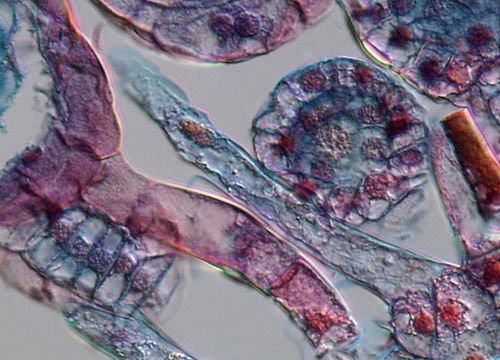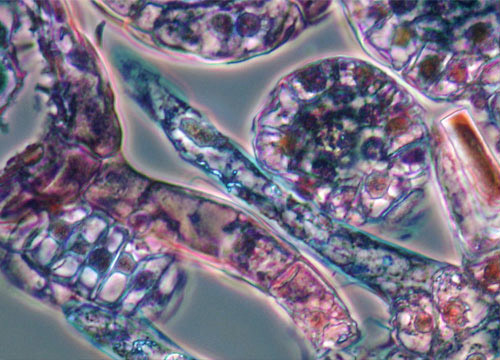Fern (Polypodium) Leaflet
A genus of fern, Polypodium plants are most often found in the New World. The plants grow above ground, but are usually supported by another object and are frequently seen growing from rocks and tree trunks.
 DIC
DIC
 Phase
Phase
Phase
The ferns constitute an ancient division of vascular plants, some of them dating back 360 million years ago to the Carboniferous Period. There are an estimated 12,000 fern species, approximately 75 of which are members of the Polypodium genus. In addition to acting as common ornamental plants, humans utilize many of the Polypodium ferns for medicinal purposes. For instance, the common polypody, P. vulgare, which is found on shady rocks and in mountainous areas of the United States, may help eliminate parasites, act as a purgative, and aid in treatments for pulmonary and hepatic diseases. The rhizome of the plant is considered to be the pharmaceutically active part and has a long history of use.
DIC
The size and shape of fern fronds vary greatly by species, but most are quite similar at the tissue level. Leaflets have an upper and a lower epidermis, the latter of which contains numerous microscopic pores. Between the layers is the mesophyll, generally composed of cells with large intercellular spaces. However, in many ferns the mesophyll was eliminated at some point during evolution and, therefore, photosynthesis primarily takes place in the epidermal layers. Veins of ferns range widely in size, from massive midribs to delicate capillaries.















